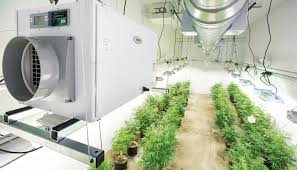In the rapidly growing cannabis industry, ensuring optimal environmental conditions is vital to cultivating top-quality plants. One of the essential elements to achieving this is a well-functioning HVAC (Heating Ventilation, Heating as well as Conditioning) (Heating, Ventilation and Conditioning) method. Cannabis HVAC equipment are created to create and maintain the ideal environment for growth of plants, and knowing their purpose and significance can significantly impact the success of a cannabis grower.
Why HVAC Systems are Essential
Cannabis plants are extremely sensitive to their environment. Factors like temperature, humidity and air quality need to be controlled with care to ensure robust growth and yields that are high. An HVAC system tailored to cannabis cultivation can help regulate these variables, creating a stable environment that encourages a healthy development of the plant and prevents issues such as mildew, mold, or nutrient deficiencies.
Key Components of Cannabis HVAC Systems
Heating Cannabis cultivates thrive in an appropriate temperature range. When it is colder or in colder climates, heating systems ensure that temperatures remain within the optimal range, typically between 70 and 85degF (20-30degC) for most strains. Infrared heaters, electric heaters and gas heaters are typically utilized, with the decision depending on the magnitude of the project and energy efficiency considerations.
Cooling: Excessive heat can stress plants, which can result in reduced growth and lower yields. Evaporative coolers, and chillers are utilized to regulate temperature levels during hotter periods. It is crucial to choose a cooling system that can handle the heat load generated from grow lamps and similar equipment.
Ventilation: Proper air circulation is essential for the health of plants. Ventilation systems help remove stale air, reduce humidity, and provide fresh CO2 for photosynthesis. Inline fans, exhaust fans and ductwork play a crucial role in maintaining a consistent flow of air and preventing the accumulation of humidity and heat.
Dehumidification: A high level of humidity could cause fungal growth, as well as other issues. Dehumidifiers can be used to ensure an optimal level of humidity, which is usually between 40-60% depending on the plant’s growth stage. This stops the growth of mold and mildew and helps maintain the health of the environment.
The Air Filtration process: to preserve the quality of air, HEPA filters and carbon filters are often employed to get rid of dirt, odors, and other contaminants. This does not only safeguard the plants, but also ensures a an enjoyable environment for the growers and nearby residents.
Energy Efficiency and Automation
The most modern cannabis HVAC systems often include energy efficient and automation. Automated controls allow for the adjustment of temperatures, humidity, and airflow according to real-time data that reduce energy consumption while improving conditions. Systems that are energy efficient, like ones that use variable-speed fans as well as ventilation systems that recover energy, help reduce operational expenses while ensuring a stable and comfortable environment.
Conclusion
A well-designed cannabis hvac systems is essential for anyone who is serious about becoming a cannabis grower. By regulating temperature, humidity, and air quality, growers can ensure healthy growth of their plants and increase their yields. Understanding the various components and functions in cannabis HVAC systems can ensure that investment is translated into successful cultivation and high-quality harvests.


